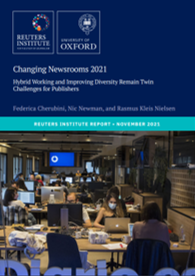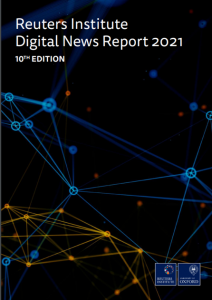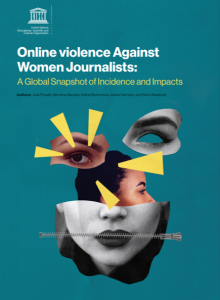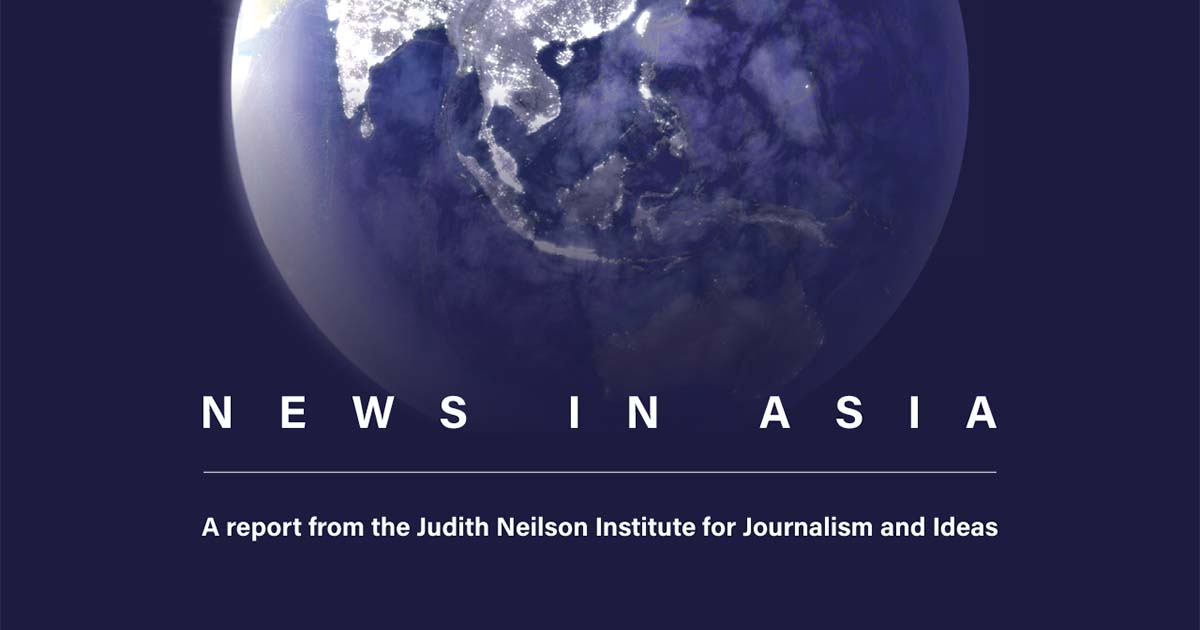Changing Newsrooms 2021
REPORT
Changing Newsrooms 2021
Hybrid Working and Improving Diversity Remain Twin Challenges for Publishers
Reuters Institute for the Study of Journalism, Oxford University | Federica Cherubini, Nic Newman, and Rasmus Kleis Nielsen
Published: 2021

The return to the office is underway but with COVID-19 lingering in a number of countries, progress remains uneven and uncertain. Many will find newsrooms very different places to the ones they left. For some, the office has disappeared completely.
This report, which is based on a survey of 132 senior industry leaders from 42 countries as well as a series of in-depth interviews, makes clear that ‘hybrid working’ will soon be the norm for the vast majority of journalists in many news organisations – with some people in the office and others working remotely – and that the industry is still struggling with attracting talent and addressing lack of diversity.
[Text sourced from the RISJ]
A Framework for Assessing the Role of Public Service Media Organizations in Countering Disinformation
JOURNAL
A Framework for Assessing the Role of Public Service Media Organizations in Countering Disinformation
University of Helsinki, Finland; Cardiff University, UK; Central European University, Austria; Complutense University of Madrid, Spain | Minna Horowitz , Stephen Cushion , Marius Dragomir, Sergio Gutiérrez Manjón, and Mervi Panti
Published: 2021
Public service media (PSM) are widely acknowledged as part of the variety of solutions to disinformation. The remit of PSM, formed around values of universality, equality, diversity, accuracy and quality, implies a responsibility to fight disinformation by producing fact-based news content and finding anti-disinformation solutions. In this article, we introduce a framework for assessing how PSM organizations are able to counter disinformation in different contexts. Our normative framework provides a triangulation of contextual factors that determine the role of the PSM organization in the national environment, the activities carried out to fight disinformation and expert assessments of the potential of PSM to reduce the impact of disinformation. The framework is illustrated with analyses of PSM from the Czech Republic (CZE), Finland, Spain and the United Kingdom (UK).
[Text sourced from the Taylor and France Online]
British Public Service Broadcasting, the EU and Brexit
REPORT
British Public Service Broadcasting, the EU and Brexit
Department of Journalism, Media and Culture, Cardiff University, Cardiff, UK | Mike Berry, Karin Wahl-Jorgensen, Inaki Garcia-Blanco, Lucy Bennett and Joe Cable
Published: 2021
This paper analyses the historic role of Britain’s major public service broadcaster, the BBC, in reporting the European Union. To do this it combines a content analysis of two datasets of BBC broadcast and online coverage from 2007 and 2012 with a series of semi-structured interviews conducted with former and current senior BBC editors and journalists. The research finds that BBC coverage in the pre-referendum period was closely tied to major events – such as summits – and elite party conflict. These patterns in coverage were primarily a consequence of the lack of traditional news values inherent in most EU stories and the impact of the wider political and media landscape. The consequence of these patterns in coverage was to present audiences with a restricted, negative and largely conflictual picture of Britain’s relationship with the EU which is likely to have fuelled rather than inhibited the growth of Euroscepticism.
[Text sourced from the Taylor and France Online]
News in Asia
REPORT
News in Asia
Understanding news media in the world’s most important region
The Judith Neilson Institute for Journalism and Ideas | Various authors
Published: 2021
In September 2021, the Judith Neilson Institute, an organisation based in Sydney but works with journalists and media organisations around the world, published its report, bringing together experts and institutions to provide a nuanced account of journalism in Asia. The report covers a comprehensively covers a broad range of topics, from changing news production and consumption to the impact of COVID-19 on the news media landscape and media development.
The Public Media Alliance is proud to have also contributed to such an important and timely project. In our chapter we explore the changing role of national broadcasters in Asia with a slide towards greater state control, and how public media is being redefined and normalised as a form of national broadcasting with less editorial independence – a key principle of public media. Read our chapter.
The Reuters Institute Digital News Report 2021
REPORT
Reuters Institute Digital News Report 2021
10th Edition
Reuters Institute for the Study of Journalism, University of Oxford | Nic Newman with Richard Fletcher, Anne Schulz, Simge Andı, Craig T. Robertson, and Rasmus Kleis Nielsen
Published: 2021

This year’s report reveals new insights about digital news consumption based on a YouGov survey of over 92,000 online news consumers in 46 markets including India, Indonesia, Thailand, Nigeria, Colombia and Peru for the first time.
The report looks at the impact of coronavirus on news consumption and on the economic prospects for publishers. It looks at progress on new paid online business models, trust and misinformation, local news, impartiality and fairness in news coverage.
[Text sourced from the Reuters Institute]
Are public service media distinctive from the market?
JOURNAL
Are public service media distinctive from the market?
Interpreting the political information environments of BBC and commercial news in the United Kingdom
Cardiff University | Stephen Cushion
Published: 2021
Public service media face an existential crisis. Many governments are cutting their budgets, while questioning the role and value of public service broadcasting because many citizens now have access to a wide range of media. This raises the question – do public service media supply a distinctive and informative news service compared to market-led media? Drawing on the concept of political information environment, this study makes an intervention into debates by carrying out a comparative content analysis of news produced by UK public service broadcasters and market-driven media across television, radio and online outlets (N = 1065) and interviewing senior editors about the routine selection of news. It found that almost all BBC news and commercial public service media platforms reported more news about politics, public affairs and international issues than entirely market-driven outlets. Online BBC news reported more informative topics than market-based media, which featured more entertainment and celebrity stories. The value of public service media was demonstrated on the United Kingdom’s nightly television news bulletins, which shone a light on the world not often reported, especially BBC News at Ten. Most market-driven media reported through a UK prism, excluding many countries and international issues. Overall, it is argued that the influence of public service media in the United Kingdom helps shape an information environment with informative news. The focus of the study is on UK media, but the conceptual application of interpreting a political information environment is designed to be relevant for scholars internationally. While communication studies have sought to advance more cross-national studies in recent years, this can limit how relevant studies are for debates in national political information environments. This study concludes by recommending more scholarly attention should be paid to theorising national policy dynamics that shape the political information environments of media systems within nations.
[Text sourced from the SAGE]
Online violence Against Women Journalists: A Global Snapshot of Incidence and Impacts
REPORT
Online violence Against Women Journalists
A Global Snapshot of Incidence and Impacts
United Nations Educational, Scientific, Cultural Organization | Julie Posetti, Nermine Aboulez, Kalina Bontcheva, Jackie Harrison, and Silvio Waisbord
Published: 2020

This report presents a snapshot of the first substantial findings from a global survey about online violence against women journalists conducted by UNESCO and the International Center for Journalists (ICFJ) in late 2020. Over 900 validated participants from 125 countries completed the survey in Arabic, English, French, Portuguese and Spanish. The findings shared here reflect the input of the 714 respondents identifying as women.
[Text sourced from UNESCO/ICFJ]
Shining a Spotlight on Media Freedom?
REPORT
Shining a Spotlight on Media Freedom?
Media Coverage of the Global Campaign for Media Freedom
City, University of London; University of East Anglia | Martin Scott, Mel Bunce, Mary Myers
Published: 2020
In our first project report, we analyse English-language, online news coverage and Twitter commentary about media freedom. Specifically, we ask whether the Global Campaign for Media Freedom (GCMF) has succeeded in ‘shining a spotlight’ on media freedom in its first year of activities, from July 2019- July 2020.
Soft Power, Hard News: How Journalists at State-Funded Transnational Media Legitimize Their Work
JOURNAL
Soft Power, Hard News: How Journalists at State-Funded Transnational Media Legitimize Their Work
Kate Wright, Martin Scott, Mel Bunce | Sage Journals
Published: May 2020
How do journalists working for different state-funded international news organizations legitimize their relationship to the governments which support them? In what circumstances might such journalists resist the diplomatic strategies of their funding states?
We address these questions through a comparative study of journalists working for international news organizations funded by the Chinese, US, UK and Qatari governments. Using 52 interviews with journalists covering humanitarian issues, we explain how they minimized tensions between their diplomatic role and dominant norms of journalistic autonomy by drawing on three – broadly shared – legitimizing narratives, involving different kinds of boundary-work. In the first ‘exclusionary’ narrative, journalists differentiated their ‘truthful’ news reporting from the ‘false’ state ‘propaganda’ of a common Other, the Russian-funded network, RT. In the second ‘fuzzifying’ narrative, journalists deployed the ambiguous notion of ‘soft power’ as an ambivalent ‘boundary concept’, to defuse conflicts between journalistic and diplomatic agendas. In the final ‘inversion’ narrative, journalists argued that, paradoxically, their dependence on funding states gave them greater ‘operational autonomy’. Even when journalists did resist their funding states, this was hidden or partial, and prompted less by journalists’ concerns about the political effects of their work, than by serious threats to their personal cultural capital.
Journalism Thrives in Slovakia Despite Growing Oligarchic Control
REPORT
Journalism Thrives in Slovakia Despite Growing Oligarchic Control
Center for Media, Data and Society | Central European University
Published: May 2020
Slovaks have access to a plethora of news platforms, but many of them are in the hands of powerful financial corporations, closely linked with political groups. Nevertheless, swelling demand for accurate, quality information boosts the country’s independent journalism.
Slovakia is a voracious news consumer, with almost two thirds of people reading news portals, newspapers or news magazines. Much of this news appetite was stirred by technological advancement. Over 86% of people use the internet, which is a big leap from less than 30% in the beginning of the 2010s…
Text sourced from CMDS | CEU
